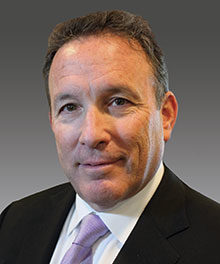Red Line in the Sand

A red line is hard to miss. It’s not vague or ambiguous like a “grey area.” It’s a pretty clear demarcation that forces you to choose which side you want to stand on.
That’s the problem with red lines. Once you draw one, it’s hard to pretend it’s not there. So in August of 2012, when President Obama drew his red line in the sand to warn Syrian President Assad against mobilizing chemical weapons in Syria, he was setting himself and the U.S. up for having to deliver on the threat (promise) of counteraction.
The President’s remark was not part of a major speech or formal diplomatic gambit. It was made during a media interview and has been described as “off the cuff.” What he actually said was this:
“We have been very clear to the Assad regime, but also to other players on the ground, that a red line for us is we start seeing a whole bunch of chemical weapons moving around or being utilized. That would change my calculus. That would change my equation.”
Off the cuff or not, the specter of the red line painted Obama into a corner when Assad did wage a chemical weapons attack on the citizens of a Damascus suburb on August 21, 2013. The President was feeling the heat when what he wanted most was a cool head.
He was able to buy some time by announcing that he would seek approval from Congress before taking any military action. And in one of the greatest ironies in American diplomatic history, Russia saved the day by using its sponsorship of Syria to get Assad to agree to turn over his cache of chemical weapons before our hand or the U.N.’s was forced.
The immediate crisis is, of course, still unfolding. We don’t yet know if Assad will deliver on his promise to relinquish his chemical weapons store by next summer. We can only hope that for the region’s safety and for the world’s shared moral compass, he will follow through, and that the international pressure will help play a part in ending Syria’s disastrous civil war.
The averted military catastrophe graphically illustrates what can happen when you start drawing lines in the sand. While the stakes may not be as high, I believe this is as true in business as it is in diplomacy.
Speaking in absolutes is not always in your best interest. It locks you into a position without allowing for new information, changing circumstances, or subtle nuances that may color small but important details.
At Marcum, we run our business the best way we know how. But nothing in our operation is carved in stone. Rarely if ever do we draw a line in the sand – you just can’t count on the Russians all the time. If we find a better way to do something, whether it’s client service, marketing, staffing, technology or something else, we change the way we’re currently doing it. There are no lines in the sand here. Our only goal is to do the best job we can for our clients, and that means being flexible enough to change with a changing business environment. For sure, the only absolute in our world is that the tax man cometh.
Julie Gross Gelfand contributed to this article.
